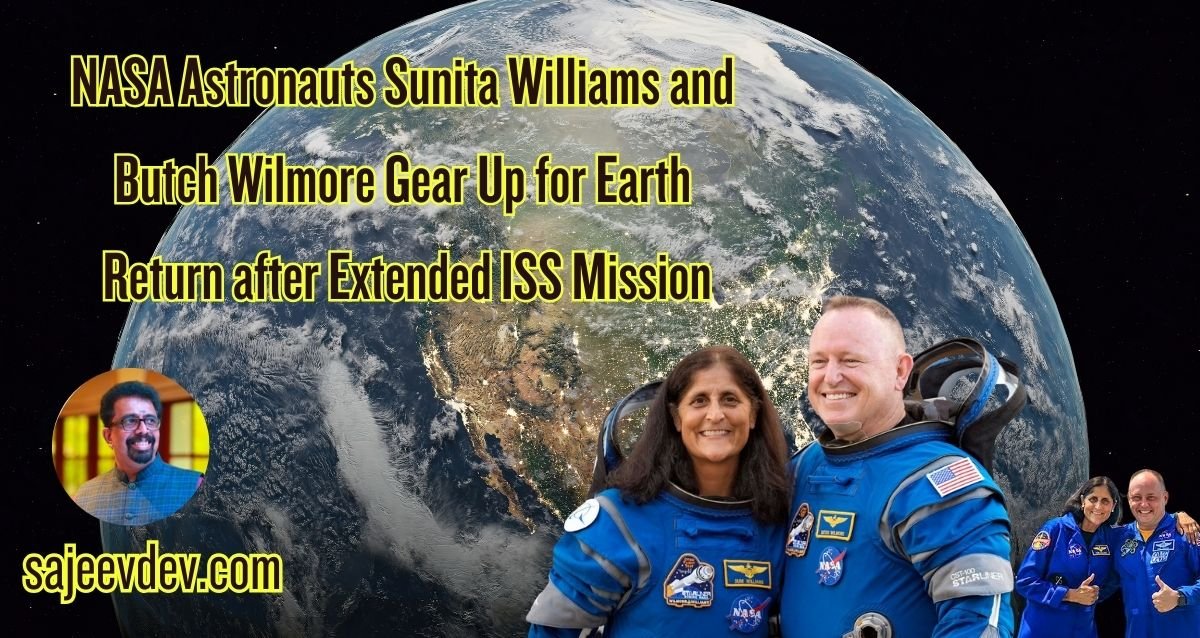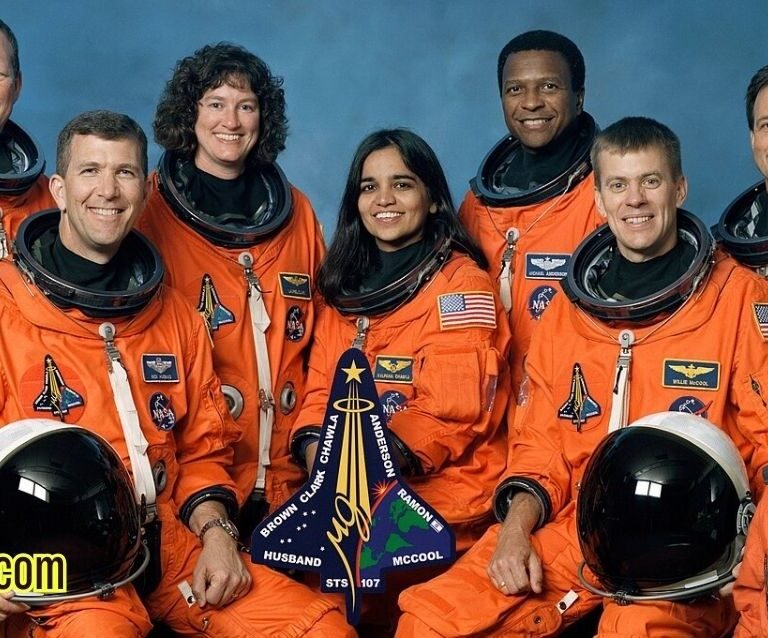The Historic Mission
NASA has long been at the forefront of space exploration, and the astronauts Sunita Williams and Butch Wilmore are prominent figures within this illustrious organization. Their recent mission aboard the International Space Station (ISS) has not only contributed to vital scientific research but has also highlighted the resilience and fortitude of human exploration beyond Earth. Sunita Williams, an accomplished astronaut and former U.S. Navy officer, holds the record for the longest cumulative time spent in space by a woman, while Butch Wilmore, a decorated test pilot and experienced astronaut, brings extensive flight experience to the mission.
This significant mission saw Williams and Wilmore engage in a series of experiments designed to advance our understanding of microgravity and the effects on the human body. The challenges they faced during their extended stay in orbit are critical in informing future missions, particularly as NASA sets its sights on deeper space exploration, including potential missions to Mars. The duo’s time aboard the ISS served as a platform for groundbreaking research that addressed issues pertinent to long-duration spaceflights, such as the psychological and physiological impacts on astronauts, an area of great importance as humanity considers longer missions beyond Earth’s orbit.
Moreover, this mission underscored the importance of international collaboration in space exploration. The ISS, a multinational endeavor, symbolizes the collective efforts of several countries to enhance our scientific knowledge and understanding of the universe. As Williams and Wilmore prepare for their return to Earth, their experiences and the results of their mission will undoubtedly contribute to the ongoing dialogue about human spaceflight and the future of exploration. As they gear up for re-entry, anticipation builds not only for their safe return but also for the insights their journey has provided to the field of aerospace and human endurance in space.
Overview of the International Space Station (ISS)
The International Space Station (ISS) stands as a remarkable testament to international cooperation in the field of space exploration. Launched in 1998, the ISS represents an ongoing collaborative project among five space agencies: NASA, Roscosmos, JAXA, ESA, and CSA. Its primary purpose is to serve as a microgravity research laboratory where scientific research is conducted in astrobiology, astronomy, meteorology, and other fields. The ISS orbits the Earth at an altitude of approximately 400 kilometers, traveling at a speed of about 28,000 kilometers per hour, completing an orbit roughly every 90 minutes.
The ISS is not only a hub for scientific research but also a platform showcasing technological advancements. It consists of various modules that contain laboratories and living quarters, allowing astronauts, such as Sunita Williams and Butch Wilmore, to conduct prolonged missions in space. Research conducted aboard the ISS contributes significantly to our understanding of fundamental human health challenges and the effects of long-duration spaceflight on the human body.
Throughout its operational history, the ISS has hosted numerous experiments that have provided insights vital to future long-term space missions and helped in the understanding of life-support systems necessary for the exploration of Mars and beyond. The facility also has a strong educational component, inspiring the next generation of scientists and engineers. Collaboration among international teams enhances the global nature of this endeavor, fostering goodwill and shared knowledge.
As astronauts prepare for their return to Earth following an extended mission aboard this unique laboratory, their experiences underscore the importance of the ISS in advancing scientific research and international partnerships. The ISS continues to be a beacon of hope and a focal point for innovation and discovery in space science.
Unexpected Extension of the Mission
The expedition of NASA astronauts Sunita Williams and Butch Wilmore aboard the International Space Station (ISS) was initially scheduled for a defined duration. However, an unexpected extension of their mission came into play, driven by a combination of unforeseen circumstances and operational requirements. One of the primary factors contributing to the extension was delays associated with crew rotations. Scheduled logistical support and resupply missions experienced setbacks, exacerbating timelines and altering plans for crew changes. The implications of these delays prompted mission control to reassess the situation and ultimately extend the astronauts’ stay aboard the ISS.
Moreover, the extension was also influenced by unanticipated technical challenges that arose during their time in orbit. Specific systems aboard the ISS encountered operational anomalies, requiring additional time for troubleshooting and resolution. Both astronauts played crucial roles in addressing these complexities, showcasing their adaptability and problem-solving skills. Williams and Wilmore collaborated closely with ground control to mitigate issues that could potentially compromise mission safety and objectives.
Despite the extended duration of their mission, both Williams and Wilmore maintained focus on their scientific and operational responsibilities. The additional time in space enabled them to conduct further research and experiments that would have initially been limited by their scheduled departure. This extended mission not only benefited their individual professional development but also contributed to the broader body of research aimed at understanding long-duration spaceflight effects on human physiology.
Ultimately, the unplanned extension of their ISS mission stands as a testament to the dynamic and unpredictable nature of human space exploration. Adaptability emerged as a critical asset for both astronauts, enabling them to embrace the challenges and opportunities presented by prolonged time in low Earth orbit.
Experiences and Challenges Aboard the ISS
Living aboard the International Space Station (ISS) presents a unique set of experiences and challenges for astronauts like Sunita Williams and Butch Wilmore. In the microgravity environment, daily tasks become a complex interplay of adaptation and innovation. Simple actions, such as eating and sleeping, require a thoughtful approach due to the absence of gravity. Astronauts often rely on specialized equipment to manage food and hydration, as they must convert their usual habits into space-friendly versions.
Physically, the body undergoes significant changes during extended stays in microgravity, necessitating rigorous exercise regimens to combat muscle and bone loss. Participants engage in daily workouts using resistance machines and treadmills equipped with harnesses, creating an environment that mimics weight on Earth. This commitment to physical health is vital, as both astronauts strive to maintain their overall fitness for re-entry and subsequent activities after their return to Earth.
Psychologically, the isolation and confinement of life in space can lead to challenges that require adaptation. Astronauts often implement coping mechanisms such as maintaining a structured daily schedule, engaging in routines that mimic their life on Earth, and practicing mindfulness techniques. Communication with family and friends through video calls and messages can provide emotional support, helping to alleviate feelings of homesickness and maintain morale during the mission.
Camaraderie among the crew becomes essential in navigating these experiences. As astronauts spend extended periods together, they develop strong bonds through shared challenges and moments of levity. Teamwork is critical, accentuating the importance of collaboration in problem-solving and overall mission success. Personal stories from the ISS, such as celebratory meals for birthdays and collective experiences during scientific experiments, highlight the profound connections formed in the unique environment of space.
Scientific Contributions Made During the Mission
Throughout their extended mission aboard the International Space Station (ISS), NASA astronauts Sunita Williams and Butch Wilmore conducted a variety of significant scientific experiments that have far-reaching implications for both space travel and life on Earth. The research undertaken during this mission spanned diverse fields, including medicine, biology, and physics, showcasing the versatility of human endeavor in the challenging environment of space.
One notable area of focus was the study of microgravity’s effects on human physiology. The astronauts conducted experiments that measured changes in muscle mass, bone density, and cardiovascular health during long-duration spaceflight. These findings are crucial for understanding how to mitigate health risks for future astronauts on missions to Mars and beyond, where extended periods in microgravity will be prevalent. Additionally, insights gained from these medical studies could benefit individuals on Earth suffering from muscle atrophy and osteoporosis.
The mission also included groundbreaking research on plant biology, investigating how microgravity influences plant growth and development. Experiments focused on gene expression and photosynthesis, with the goal of improving sustainability in space agriculture, an essential aspect of long-term space exploration. The outcomes of these studies may pave the way for enhanced agricultural practices on Earth, especially in areas facing challenging environmental conditions.
Furthermore, Williams and Wilmore contributed to various physics-related experiments that sought to better understand fluid dynamics and combustion processes in microgravity. Such research not only expands scientific knowledge but also has practical applications in enhancing the efficiency of technologies used both in space and in terrestrial industries.
Overall, the scientific contributions made by Williams and Wilmore during their ISS mission represent a vital step forward in preparing humanity for future exploration and improving life on our home planet. The outcomes of their research are expected to inform ongoing studies and support advancements across multiple disciplines.
Preparation for Splashdown
As NASA astronauts Sunita Williams and Butch Wilmore prepare for their return to Earth following an extended mission aboard the International Space Station (ISS), meticulous preparations are critical to ensure a safe and successful splashdown. The spacecraft, known as the Crew Dragon, plays a vital role in this journey. Before their departure from the ISS, the spacecraft undergoes a series of pre-launch checks to confirm all systems are operational. This ensures that the crew can safely navigate the void of space before their entry into Earth’s atmosphere.
The splashdown process itself is a highly coordinated event, necessitating precise timing and communication. In the hours leading up to re-entry, mission control closely monitors various parameters, including the spacecraft’s trajectory and speed. This phase marks one of the mission operations that underscores the collaboration between astronauts and ground teams, ensuring that every aspect of the crew’s return has been accounted for.
Upon re-entry, the Crew Dragon will experience intense heat and forces, which necessitates robust engineering and design considerations. The spacecraft’s heat shield is engineered to withstand the extreme temperatures of re-entry. Thrust re-entry techniques are employed to manage the spacecraft’s descent, adjusting its trajectory to hit the designated splashdown zone in the ocean. This careful planning is coupled with extensive training for recovery teams, who are positioned near the expected landing area. Their readiness includes deploying boats and personnel to retrieve the astronauts from the ocean post-splashdown.
In addition to focusing on technical measures, safety protocols are also prioritized. Medical personnel are on standby to assess the astronauts’ health as they return to gravity after months of microgravity conditions aboard the ISS. The combination of advanced technology, thorough planning, and rigorous safety measures augmented by the mission control teams reinforces NASA’s commitment to the astronauts’ well-being, ensuring a successful and secure transition back to Earth.
Impact of the Return on Future Missions
The extended mission of NASA astronauts Sunita Williams and Butch Wilmore aboard the International Space Station (ISS) serves as a critical case study for the future of human space exploration. The insights gained from their time in microgravity are poised to significantly inform NASA’s strategies for upcoming missions, particularly those targeting destinations like Mars and beyond. Understanding how long-duration spaceflight affects human physiology and psychology is paramount as space agencies prepare for the challenges of interplanetary travel.
One of the key implications of their extended stay is the emphasis on the importance of physical and mental health monitoring. Observations from Williams and Wilmore’s mission highlight the need for tailored exercise regimens and psychological support systems. As astronauts face isolation for extended periods, maintaining mental well-being is as critical as preserving physical fitness. Research from their experiences could lead to the development of comprehensive health protocols for future crews tasked with lengthy missions, helping to mitigate risks associated with potential health deteriorations.
Moreover, the operational practices employed during their mission offer valuable lessons in resource management and daily routines. Efficient systems for managing supplies, conducting experiments, and adhering to rigorous schedules have been refine through their experience. Such systematic approaches could enhance workflows for future explorers on Mars, where logistical challenges will arise due to distance, limited resources, and longer communication delays with Earth.
In summary, the knowledge gleaned from Sunita Williams and Butch Wilmore’s extended ISS mission will likely contribute profoundly to our understanding of human challenges in space. As NASA prepares for ambitious missions, the lessons learned will directly influence the design and implementation of future spaceflight missions, ensuring astronauts are better equipped to thrive in the harsh conditions of deep space exploration.
Public and Media Reaction to the Mission
The recent extended mission of NASA astronauts Sunita Williams and Butch Wilmore aboard the International Space Station (ISS) has elicited a profound response from the public and media alike. Their journey not only underscored the significance of continuous human presence in space but also reignited public interest in space exploration. As these astronauts conducted experiments and shared their daily lives in microgravity, they effectively transformed abstract scientific endeavors into relatable narratives, captivating audiences on Earth.
Media coverage of Williams and Wilmore’s experiences was extensive and varied, spanning from traditional outlets to social media platforms. Major news networks featured stories that highlighted not only the scientific achievements attained during the mission but also the personal anecdotes shared by both astronauts. Their interactions with the audience, facilitated by live broadcasts and social media updates, provided real-time engagement with individuals interested in cutting-edge science and technology. These communications fostered a sense of connection, allowing people to feel as if they were a part of the mission itself.
The astronauts’ engagement extended to educational initiatives, where they inspired students and young professionals to contemplate careers in science, technology, engineering, and mathematics (STEM). Williams and Wilmore frequently emphasized the importance of education during their mission, drawing attention to the role that the next generation will play in advancing space exploration. Their compelling stories have resonated particularly with young audiences, producing a ripple effect that encourages interest in the fields related to space science.
Ultimately, the public and media reaction to this mission encapsulates a broader enthusiasm for space exploration. The astronauts’ journey has not only advanced important scientific research but also galvanized public support for the continuation of missions to the ISS and beyond, underpinning the collective human quest to explore the unknown.
A New Chapter Begins
As Sunita Williams and Butch Wilmore prepare to return from their extended mission aboard the International Space Station (ISS), their journey serves as a testament to the resilience and ingenuity of humankind in the realm of space exploration. Their time spent orbiting Earth has not only contributed to vital scientific research, but it has also fostered international cooperation among various space agencies. This successful mission underscores the significance of continued investment in space endeavors, which is essential for furthering our understanding of life beyond our planet.
Williams and Wilmore have demonstrated extraordinary dedication and skill during their stay at the ISS. Their experiences will undoubtedly play an instrumental role in shaping future missions, both for themselves and for the new generation of astronauts yet to come. Upon their return, they plan to engage with the public and share their unique perspectives on space travel, inspiring young minds to pursue their dreams of exploration and scientific discovery. It’s these lived experiences that bridge the gap between the abstract concepts of space science and the tangible aspirations of tomorrow’s pioneers.
Moreover, the astronauts’ remarkable journey highlights the importance of continuous efforts in space exploration. As humanity encounters challenges, from climate change to resource scarcity, the knowledge obtained from missions like those led by Williams and Wilmore is invaluable. Their work aboard the ISS has emphasized the vital connection between space research and the advancement of technology and innovation on Earth.
In summary, as Sunita Williams and Butch Wilmore transition back to life on Earth, they herald a new chapter in space exploration. Their accomplishments encourage ongoing support and investment in the field, motivating future generations to reach beyond the stars in pursuit of knowledge and discovery.








